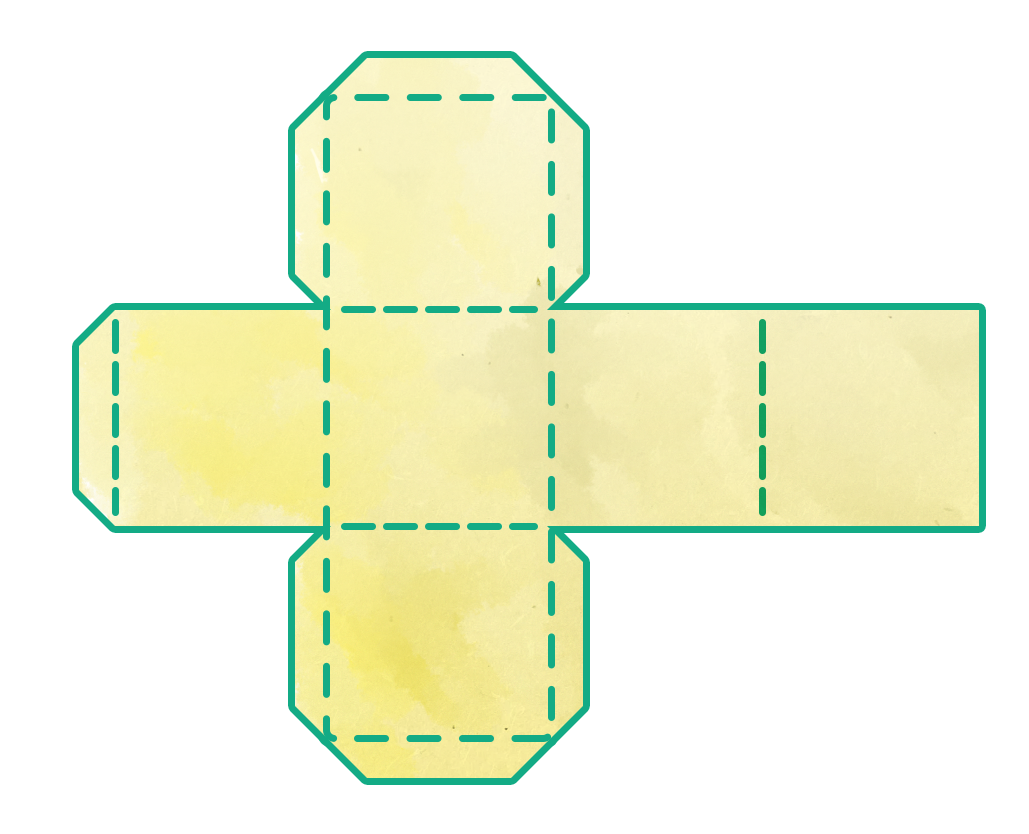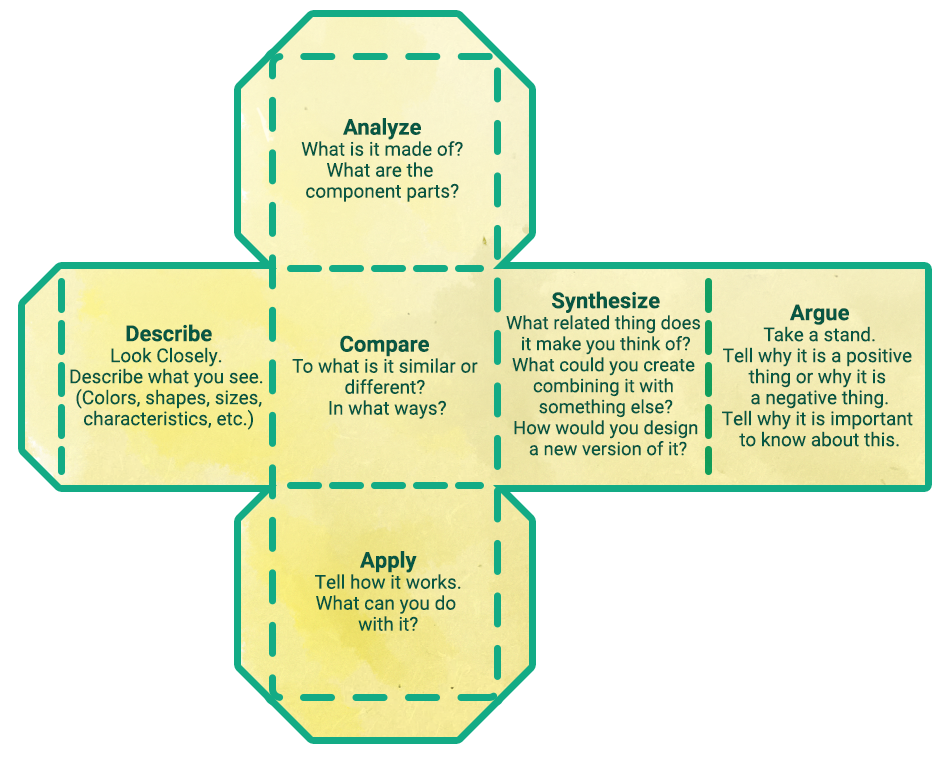Card

Critical Thinking Cube
This is a writing activity that enables students to have fun while practicing different levels of critical thinking, from lower order to higher order. Students construct cubes to examine a topic of study from six different perspectives.
Critical Thinking Cube
Summary
The Critical Thinking Cube enables students to examine a topic of study from six different perspectives. This is a versatile and fun exercise that can help students strengthen their writing skills while practicing both lower-order and higher-order thinking skills.
Procedure
Use the attached template, or have students cut out a piece of paper with dotted lines for folding into a cube.
Before students begin folding, have them write six prompts (one on each side of the cube). Reword the following prompts as needed to address the topic of study more specifically:
Describe: What do you see/know?
Apply: How does it work?
Compare: What is it similar to or different from?
Analyze: What are the component parts?
Synthesize: Create, combine, and design something new.
Argue: Argue for or against it.
Have students fold and tape or glue their cubes together.
As a time-saving alternative, show students a list of the six prompts and which number on a die corresponds with each.
In pairs or individually, have students roll their cubes or dice and respond to the face-up prompt as it relates to the topic of study. Allow 2–5 minutes for students to write their responses to each prompt. Be sure students roll enough times to address every prompt.
If students completed the activity in pairs, give them several minutes afterward to discuss their responses to the prompts before moving into a whole-class discussion. If students worked individually, you could move immediately into the whole-class discussion or have students get in small groups first to share their responses with one another before reconvening as a class.

Adapted from Forget, M. A. (2004). MAX teaching with reading and writing: Classroom activities for helping students learn new subject matter while acquiring literacy skills (pp. 124–130, 249). Trafford.




